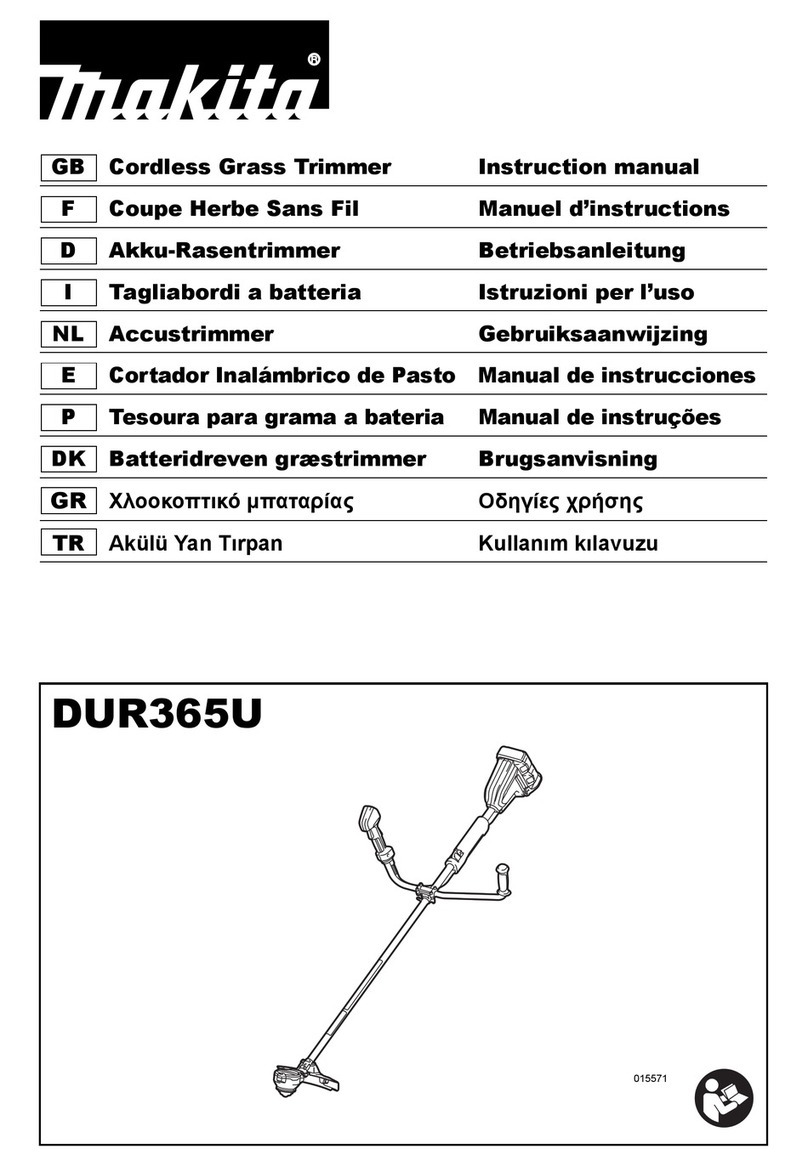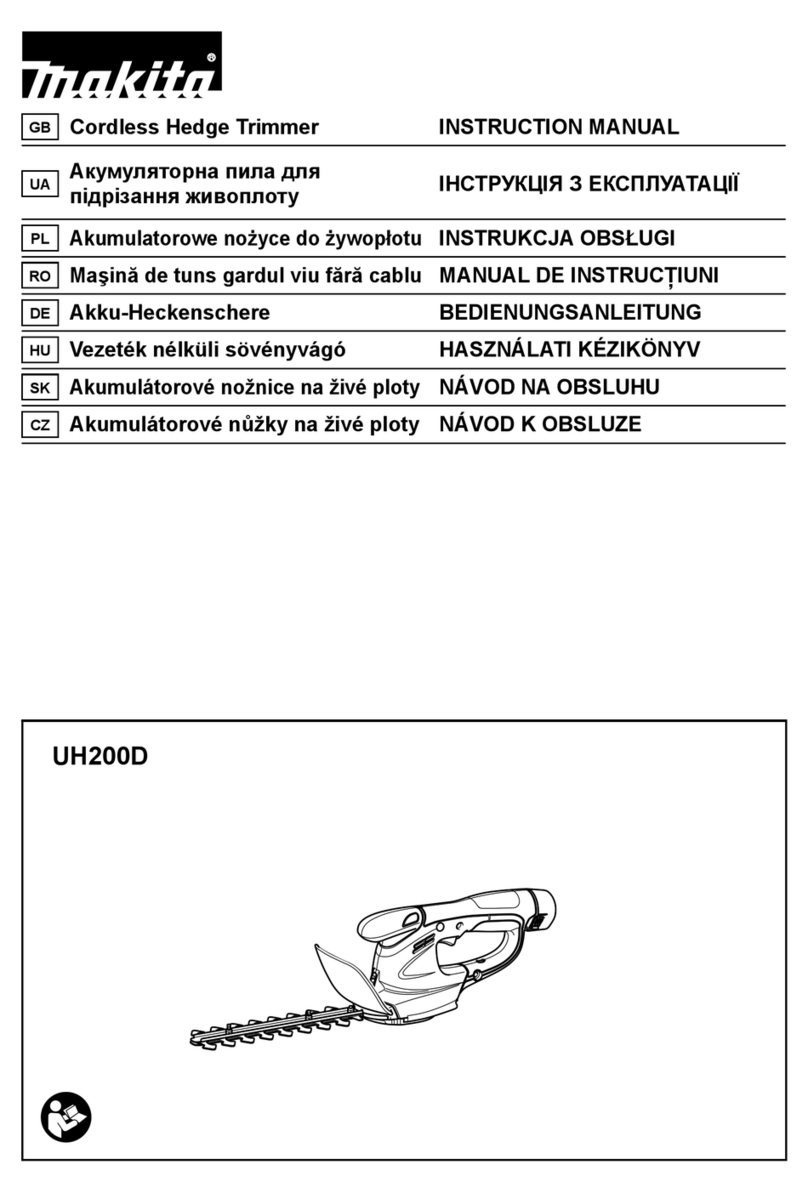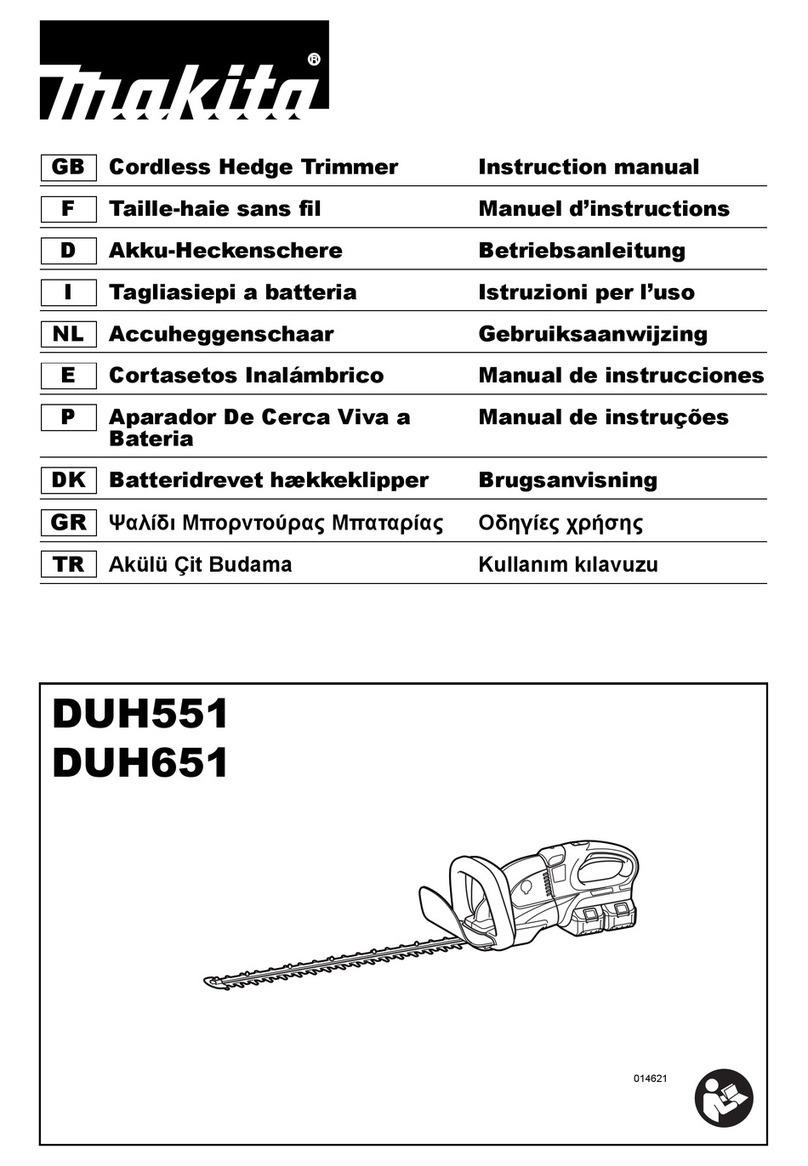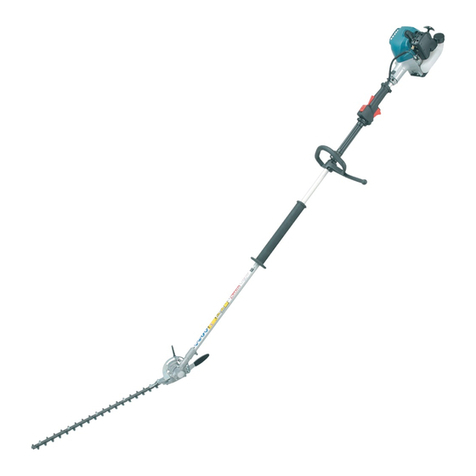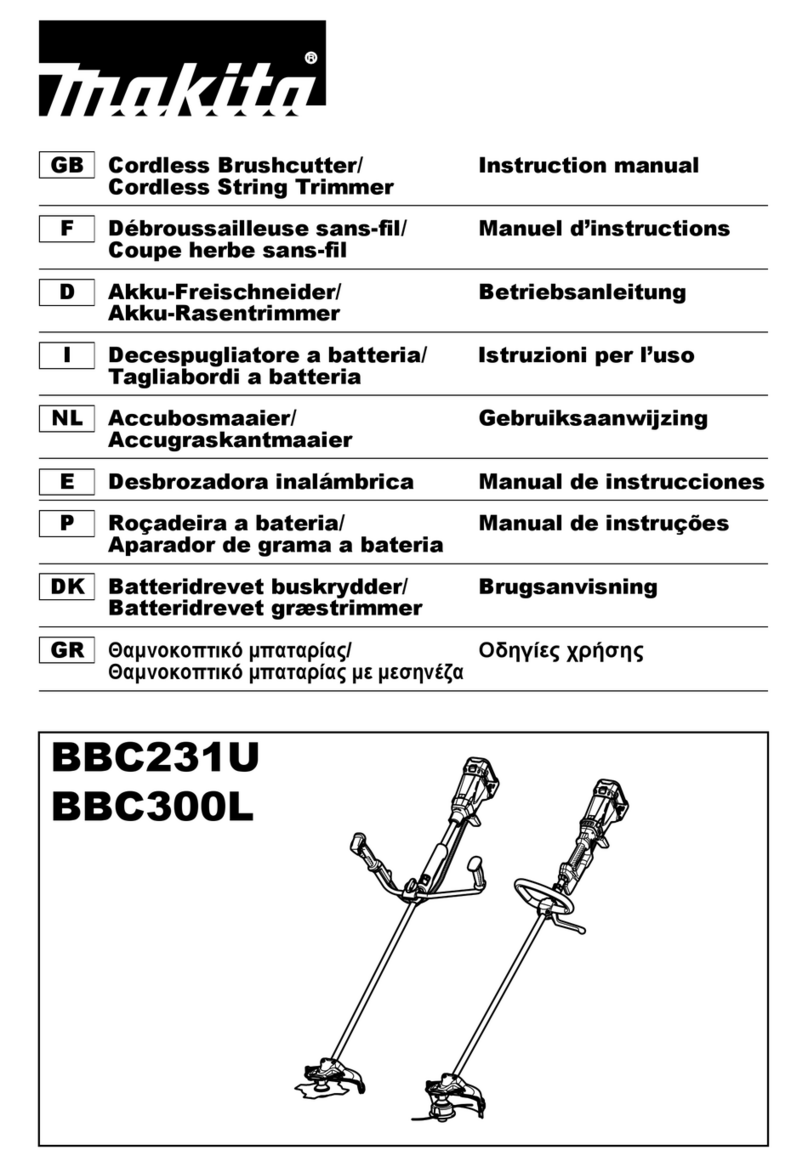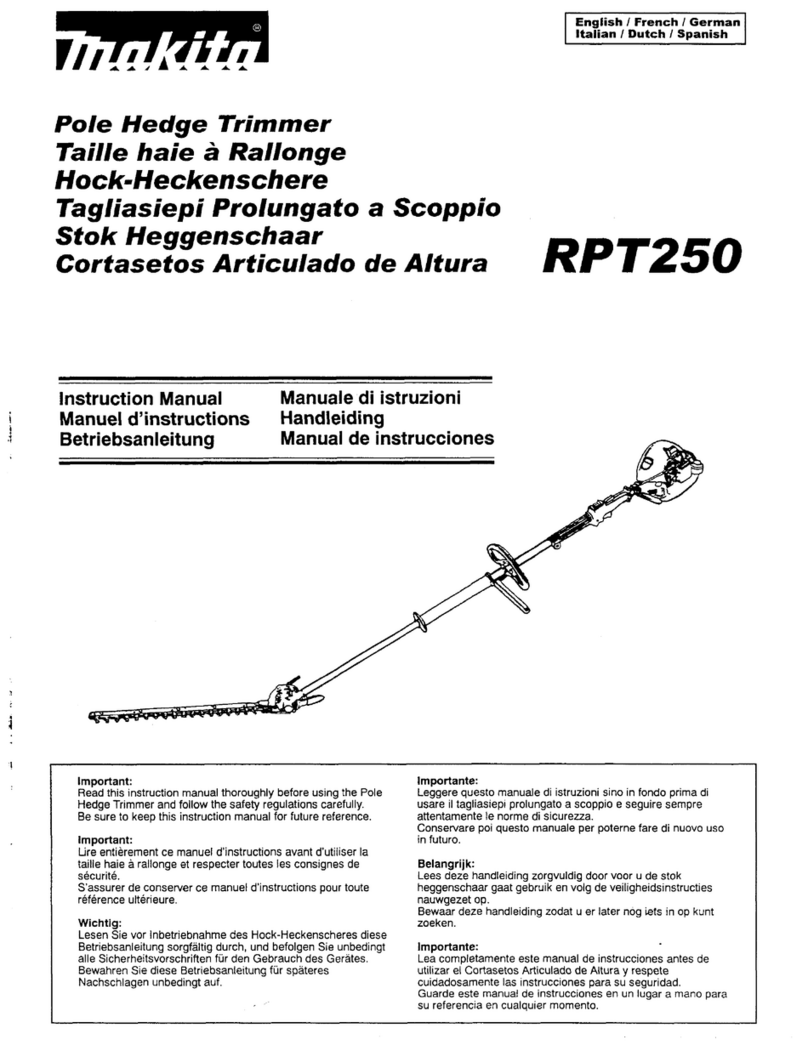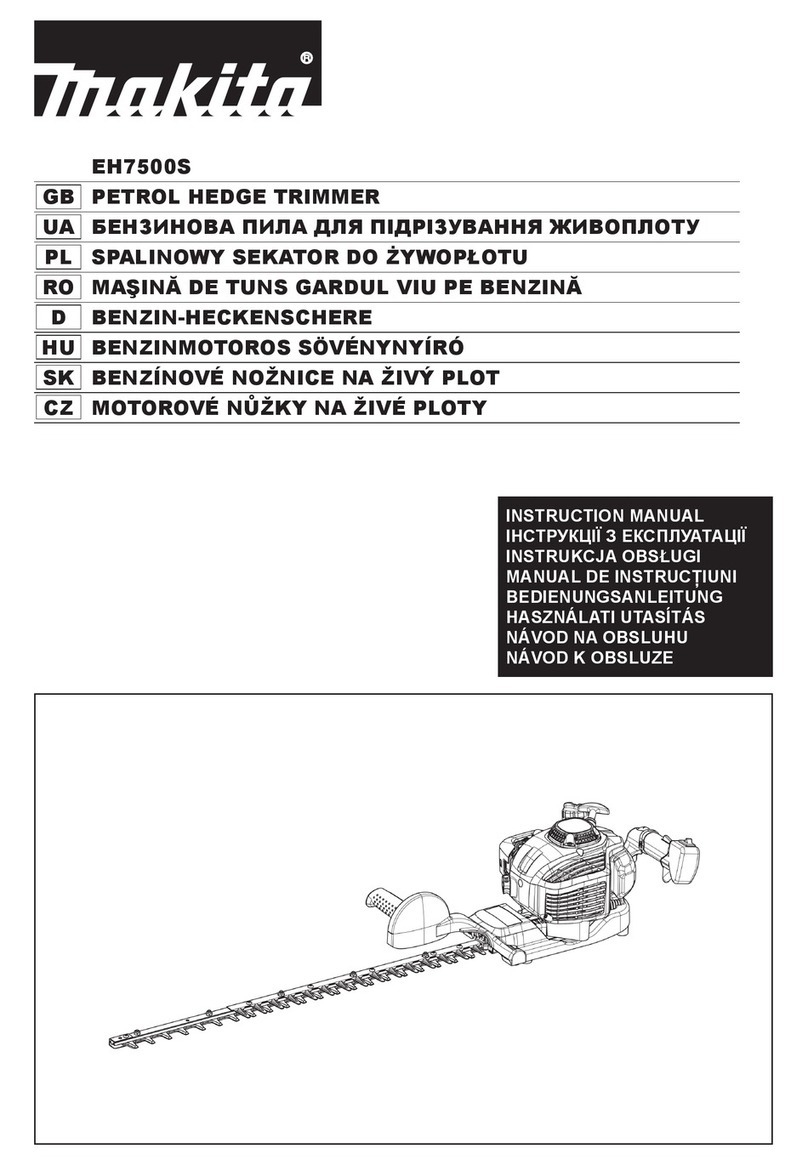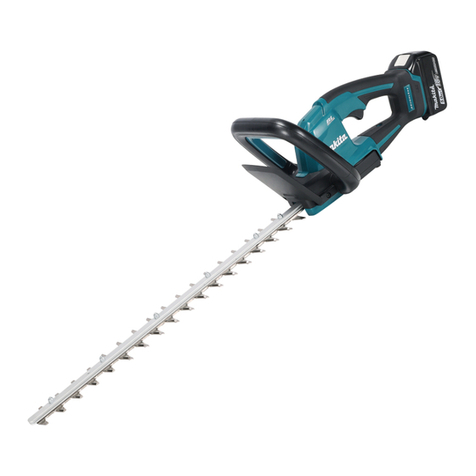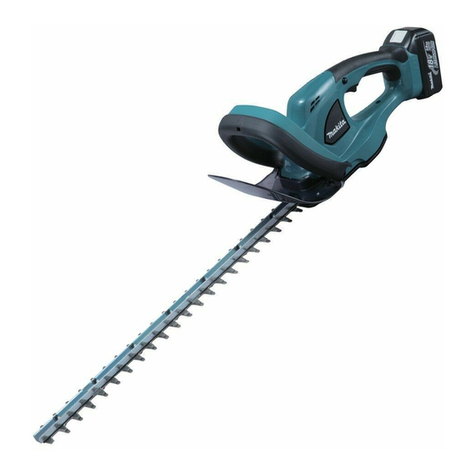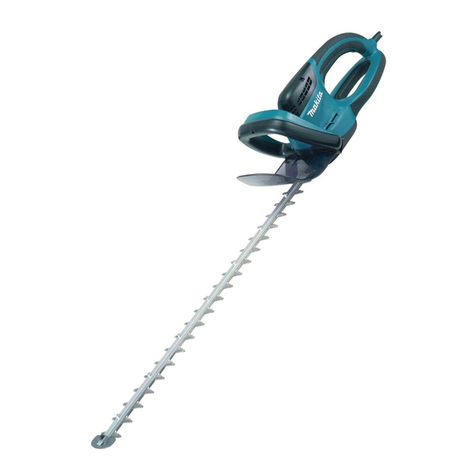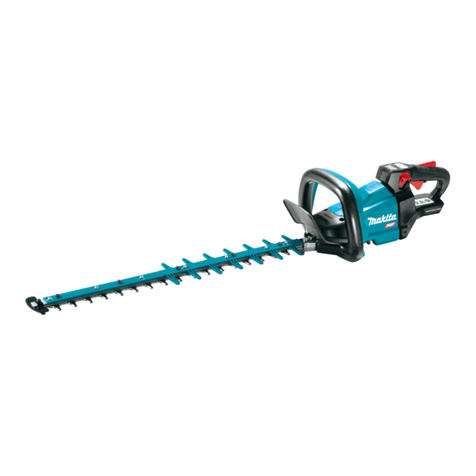8
General Power Tool Safety Warnings
WARNING Read all safety warnings and all
instructions. Failure to follow the warnings and
instructions may result in electric shock, re and/or
seriousinjury.
Save all warnings and instructions for future
reference.
The term “power tool” in the warnings refers to your
mains-operated(corded)powertoolorbattery-operated
(cordless)powertool.
Work area safety
1. Keep work area clean and well lit. Cluttered or
darkareasinviteaccidents.
2. Do not operate power tools in explosive
atmospheres, such as in the presence of
ammable liquids, gases or dust. Power tools
createsparkswhichmayignitethedustorfumes.
3. Keep children and bystanders away while
operating a power tool. Distractionscancauseyou
tolosecontrol.
Electrical safety
4. Power tool plugs must match the outlet. Never
modify the plug in any way. Do not use any
adapter plugs with earthed (grounded) power
tools. Unmodied plugs and matching outlets will
reduceriskofelectricshock.
5. Avoid body contact with earthed or grounded
surfaces such as pipes, radiators, ranges and
refrigerators. Thereisanincreasedriskofelectric
shockifyourbodyisearthedorgrounded.
6. Do not expose power tools to rain or wet
conditions. Waterenteringapowertoolwillincrease
theriskofelectricshock.
7. Do not abuse the cord. Never use the cord for
carrying, pulling or unplugging the power tool.
Keep cord away from heat, oil, sharp edges
or moving parts. Damaged or entangled cords
increasetheriskofelectricshock.
8. When operating a power tool outdoors, use an
extension cord suitable for outdoor use. Useof
acordsuitableforoutdoorusereducestheriskof
electricshock.
9. If operating a power tool in a damp location is
unavoidable, use a residual current device (RCD)
protected supply. UseofanRCDreducestherisk
ofelectricshock.
10. Use of power supply via a RCD with a rated
residual current of 30 mA or less is always
recommended.
Personal safety
11. Stay alert, watch what you are doing and use
common sense when operating a power tool. Do
not use a power tool while you are tired or under
the inuence of drugs, alcohol or medication. A
moment of inattention while operating power tools
mayresultinseriouspersonalinjury.
12. Use personal protective equipment. Always wear
eye protection. Protectiveequipmentsuchasdust
mask, non-skid safety shoes, hard hat, or hearing
protectionusedforappropriateconditionswillreduce
personalinjuries.
13. Prevent unintentional starting. Ensure the
switch is in the off-position before connecting
to power source and/or battery pack, picking up
or carrying the tool. Carryingpowertoolswithyour
ngeronthe switch orenergising power toolsthat
havetheswitchoninvitesaccidents.
14. Remove any adjusting key or wrench before
turning the power tool on. Awrenchorakeyleft
attached to a rotating part of the power tool may
resultinpersonalinjury.
15. Do not overreach. Keep proper footing and
balance at all times. Thisenablesbettercontrolof
thepowertoolinunexpectedsituations.
16. Dress properly. Do not wear loose clothing or
jewellery. Keep your hair, clothing, and gloves
away from moving parts. Looseclothes,jewellery
orlonghaircanbecaughtinmovingparts.
17. If devices are provided for the connection of dust
extraction and collection facilities, ensure these
are connected and properly used. Use of dust
collectioncanreducedust-relatedhazards.
Power tool use and care
18. Do not force the power tool. Use the correct
power tool for your application. Thecorrectpower
tool will do the job better and safer at the rate for
whichitwasdesigned.
19. Do not use the power tool if the switch does not
turn it on and off. Any powertoolthat cannotbe
controlledwiththeswitchisdangerousandmustbe
repaired.
20. Disconnect the plug from the power source and/
or the battery pack from the power tool before
making any adjustments, changing accessories,
or storing power tools. Such preventive safety
measuresreducetheriskofstartingthepowertool
accidentally.
21. Store idle power tools out of the reach of children
and do not allow persons unfamiliar with the
power tool or these instructions to operate the
power tool. Powertoolsaredangerousinthehands
ofuntrainedusers.
22. Maintain power tools. Check for misalignment or
binding of moving parts, breakage of parts and
any other condition that may affect the power
tool’s operation. If damaged, have the power tool
repaired before use. Manyaccidentsarecausedby
poorlymaintainedpowertools.
23. Keep cutting tools sharp and clean. Properly
maintainedcuttingtoolswithsharpcuttingedgesare
lesslikelytobindandareeasiertocontrol.
24. Use the power tool, accessories and tool bits
etc. in accordance with these instructions,
taking into account the working conditions and
the work to be performed. Useofthepowertoolfor
operationsdifferentfromthoseintendedcouldresult
inahazardoussituation.
Service
25. Have your power tool serviced by a qualied
repair person using only identical replacement
parts. Thiswillensurethatthesafetyofthepower
toolismaintained.
26. Follow instruction for lubricating and changing
accessories.
27. Keep handles dry, clean and free from oil and
grease.
